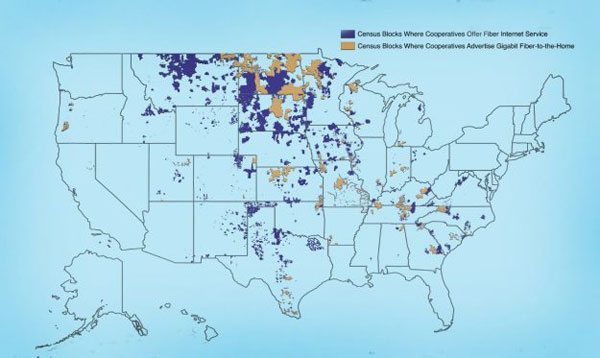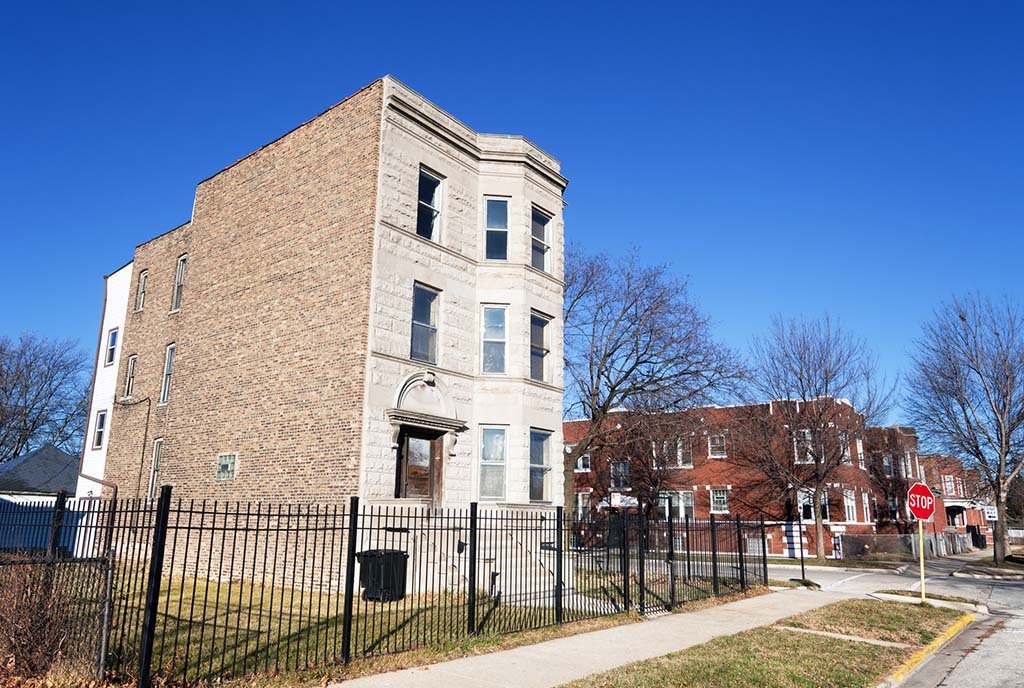
November 29, 2017; State Scoop
“The rural US makes up only 14 percent of the population, but covers 72 percent of the land area,” notes Jason Shueh in State Scoop. The lower density makes private provision of services difficult because revenues generated per mile of fiber are far lower. The result should not be surprising: while 96 percent of urban Americans have access to broadband service, 39 percent of rural Americans lack broadband access, which plays an increasingly central role in our economy. Lack of broadband frequently leads to lack of income. But there may be a ready, low-cost solution—a cooperative solution—if we seize it.
Cooperative broadband builds on a successful co-op model employed by the US during the Great Depression. The challenge at the time was electrification. As the University of Wisconsin’s Center for Cooperatives explains, “By the 1930s nearly 90 percent of US urban dwellers had electricity, but 90 percent of rural homes were without power. Investor-owned utilities often denied service to rural areas, citing high development costs and low profit margins.” In 1935, President Roosevelt responded by signing Executive Order No. 7037, establishing the Rural Electrification Administration—today’s Rural Utility Service—which made loans available to member-owned nonprofit cooperatives to wire rural America; by 1953, 90 percent of rural Americans had power.
In a report released earlier this week by the Institute for Local Self-Reliance, Christopher Mitchell and Hannah Trostle suggest applying the same model to close the rural-urban broadband gap. One big advantage that we have over the 1930s is that no new organizations need be formed. Today, the National Rural Electrical Cooperative Association reports that “900 cooperatives in 47 states provide electric service to almost three-quarters of the nation’s landmass.” Co-ops deliver 11 percent of all kilowatt hours of electricity in the United States and 42 million Americans receive their electric power from co-ops.
The idea of electric co-ops providing broadband is not new. Indeed, in over 350 communities nationwide, rural broadband is already provided by co-ops, including, Shueh notes, in large swaths of North Dakota, South Dakota, and Montana. According to Mitchell, “much of this infrastructure was built with small loans from the U.S. Department of Agriculture’s Rural Utility Service.”
So, if electric cooperatives are ubiquitous in rural America, why do 39 percent of rural Americans still lack broadband service? One key reason: rather than provide low-cost loans to co-ops, federal policy has sought to use larger subsidies to push corporate providers to install the service, even as corporations have pushed back. As Mitchell observes, “Those companies don’t want to invest in rural areas and we are over-subsidizing them…If the government decides to spend more subsidies on cooperatives, we would see that money go much further.”
Sign up for our free newsletters
Subscribe to NPQ's newsletters to have our top stories delivered directly to your inbox.
By signing up, you agree to our privacy policy and terms of use, and to receive messages from NPQ and our partners.
As Shueh notes, the reason for corporate pushback is that rural fiber investments are not very profitable. Shueh explains:
Even with millions of dollars in federal subsidies, telecoms and their shareholders are often repelled by low subscriber rates that don’t always justify the investment in maintenance costs for the fiber networks. In Pennsylvania, this is one possible reason why Verizon decided to turn down more than $140 million in federal subsidies to expand broadband in the state, a decision Pennsylvania’s Public Utility Commission has warned may hurt its rural communities.
According to Mitchell, with the subsidies, rural broadband does turn a small profit, but the IRR [internal rate of return] is too low. As Mitchell puts it, “The real question is not whether it is profitable, but how profitable is it. For AT&T, rural broadband needs to be really profitable to be worth doing because they can make a lot of money in wireless and other areas.”
Mitchell adds that while the returns for rural broadband may be too low to justify corporate investment, “they are more than enough for cooperatives that have the patience to wait 10 years to recuperate their initial infrastructure investments.”
According to Mitchell, “what should happen is that the federal government should be offering one-time capital expenditures for cooperatives—and particularly electric cooperatives.” Additional policy recommendations, note Shueh, include “a call for state and federal authorities to open additional funding sources for cooperatives, via grants and loans, and to remove federal barriers for electric cooperatives applying for federal grants to start local fiber networks.”
In their report, Mitchell and Trostle end by noting that, “The story of rural Internetification is just starting to be told, but it is clear that cooperatives will have a large role. The sooner policymakers realize that, the faster and less expensive it will be to connect everyone.”—Steve Dubb













